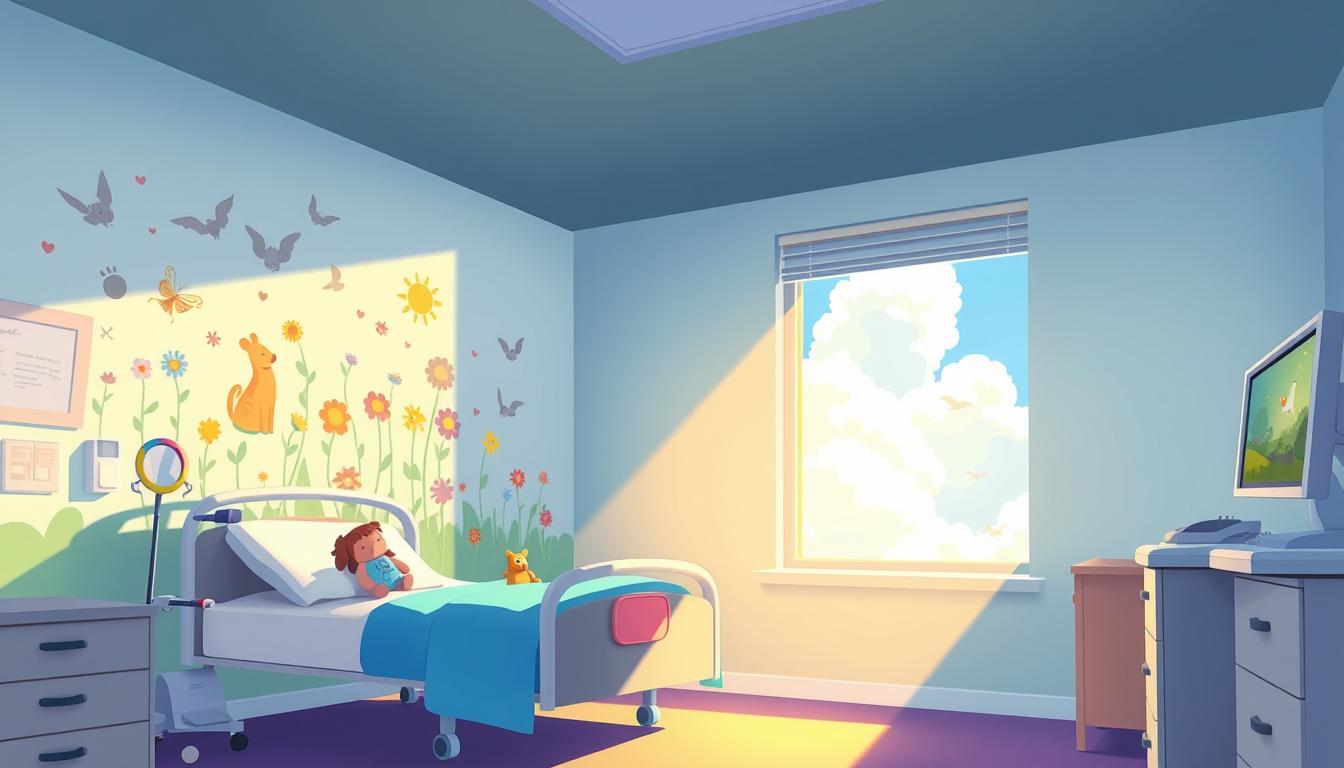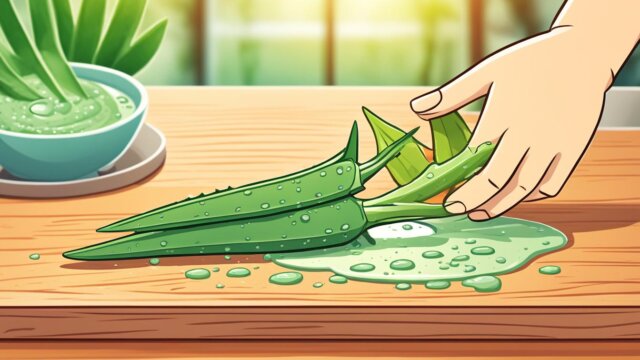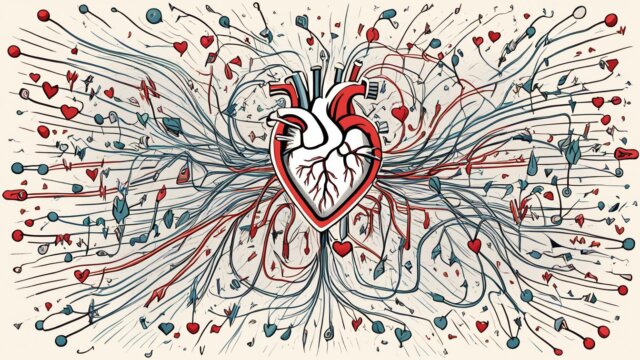FTC disclaimer: This post may contains affiliate links and we will be compensated if you click on a link and make a purchase.
Every week, 290 kids in the U.S. get cancer. Since 1962, survival rates have jumped from 20% to over 80% at St. Jude’s. But sadly, 1 in 5 kids don’t make it past 5 years. This shows we need more money for research and support.
September is Childhood Cancer Awareness Month. It highlights the tough times families face with this disease. In rich countries, survival rates are over 80%. But in poor countries, 90% of kids with cancer don’t get the help they need. St. Jude Global is working to change this by helping kids all over the world.
Key Takeaways
- Childhood cancer is a devastating reality, with an estimated 290 children and adolescents diagnosed each week in the U.S.
- Survival rates have improved dramatically, but 1 in 5 children still do not reach the 5-year milestone.
- Funding for childhood cancer research remains significantly lower compared to adult cancer research.
- Global disparities exist, with 90% of children with cancer living in low- and middle-income countries with limited access to treatment.
- Initiatives like St. Jude Global aim to improve care and increase survival rates worldwide.
Childhood Cancer: A Heartbreaking Reality
Childhood cancer is a sad reality for families in the United States. Every day, about 44 kids get cancer. Sadly, 1 in 5 of these kids won’t make it to their 5th birthday. Yet, only 4% of the money for cancer research goes to kids.
Staggering Statistics and the Need for Awareness
Worldwide, about 400,000 kids and teens get cancer every year. But only half of them get diagnosed. This shows we need to spread the word and help more, especially in poor countries where survival rates are low.
Childhood Cancer Statistics | Impact |
|---|---|
44 children diagnosed with cancer each day in the US | 1 in 5 children do not reach the 5-year survival milestone |
400,000 children and adolescents develop cancer globally each year | Only half of these children’s diseases are diagnosed |
4% of the federal cancer research budget is dedicated to pediatric cancer | Significant funding gap compared to adult cancer research |
The numbers are heartbreaking. We must do more to help kids with cancer. By raising awareness and pushing for more Childhood Cancer Awareness and Pediatric Cancer Funding, we can help more kids fight this disease.
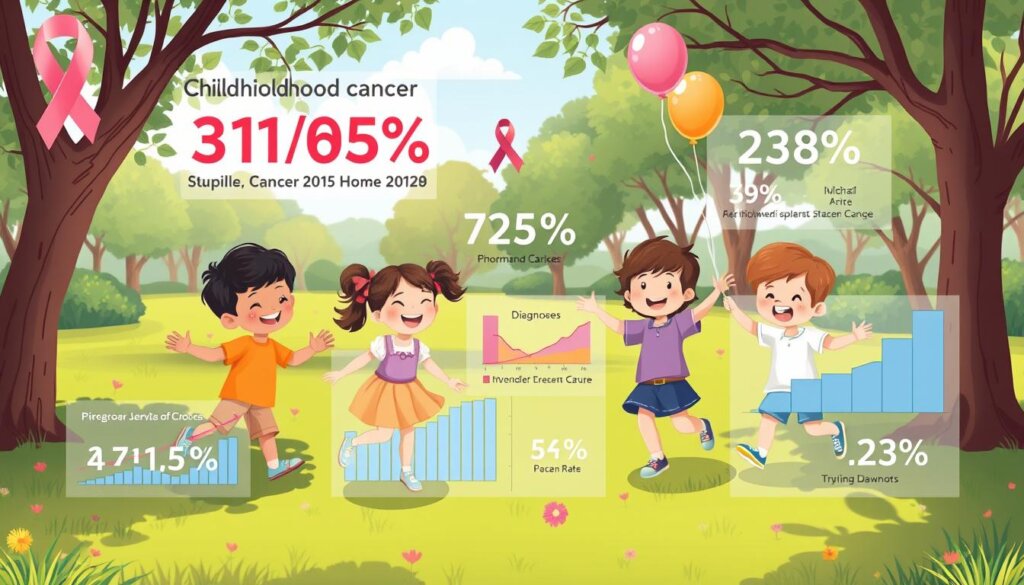
“Kids who relapse have a less than 30% chance of making it five years, and existing research will almost never make it to a clinical trial. Pharmaceutical companies have been incentivized to focus on pediatric cancer, but more efforts are needed.”
Exploring the Most Common Types of Childhood Cancer
Childhood cancer is a tough reality, but knowing the common types can offer hope. In the U.S. in 2024, about 9,620 kids will get cancer, and 1,040 will sadly die from it. Yet, cancer death rates for kids have dropped by 70% since 1970.
The top cancers in kids are leukemias, brain tumors, and lymphomas. Leukemia, especially AML, is a big one. Rhabdomyosarcoma, a muscle tumor, is also common in kids.
Medulloblastoma is a common brain tumor in kids. Kids with leukemia or lymphoma often survive, with a survival rate of over 80%.
Genetic factors play a big role in some cancers. About 8 to 10 percent of childhood cancers are genetic. For example, eye cancer, retinoblastoma, is now curable in over 95% of cases.
Hospitals with cancer experts are often part of the Children’s Oncology Group (COG).
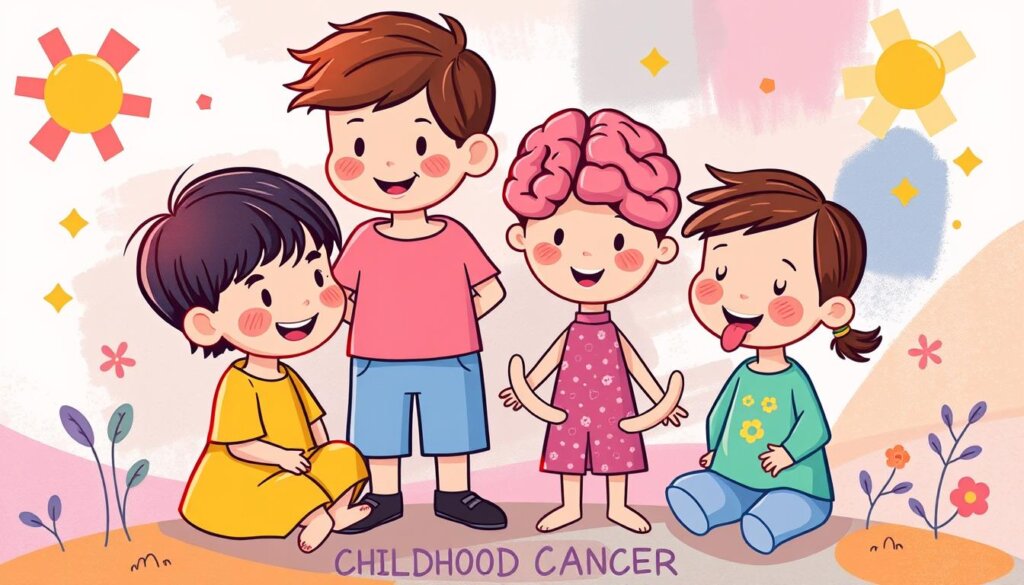
By learning about childhood cancer and new treatments, we can fight for a future where kids can beat this disease.
St. Jude Children’s Research Hospital: A Beacon of Hope
St. Jude Children’s Research Hospital is leading the fight against childhood cancer. It’s a place where kids get the best care and research happens. Founded in 1962, it’s changed the way we treat kids with cancer.
Pioneering Childhood Cancer Research and Treatment
St. Jude is a beacon of hope in the fight against childhood cancer. It’s the first hospital made just for kids with cancer. They also help with sickle cell disease and other serious illnesses.
The hospital has made big strides in its mission. Over 9,000 people attended its grand opening, and treatments here have helped more kids survive cancer.
St. Jude is also a leader in clinical trials for kids with cancer. They work with others worldwide to improve care and survival rates. This helps kids with cancer and other serious diseases.
St. Jude’s researchers are finding new ways to fight rare and aggressive cancers. They focus on finding cures for kids with brain cancers. Their work is a big step towards saving more young lives.
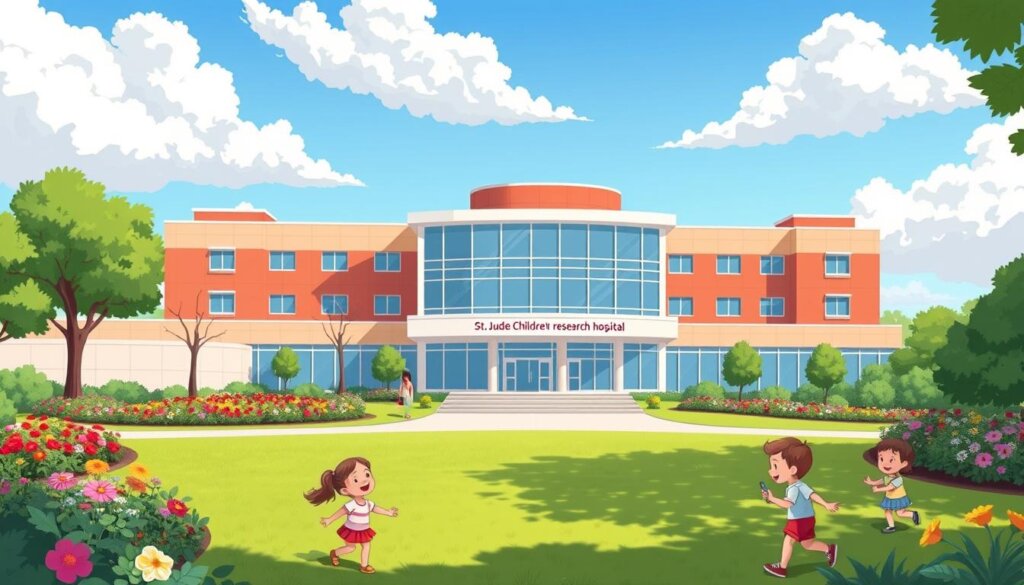
“The work we do at St. Jude is about transforming the lives of children with cancer and other life-threatening diseases. Our mission is to find cures and ensure that no child dies in the dawn of life.” – Dr. James R. Downing, President and CEO of St. Jude Children’s Research Hospital
St. Jude Children’s Research Hospital is a beacon of hope. It inspires and leads the fight against childhood cancer, improving the lives of children and their families everywhere.
Childhood Cancer Survivors: Inspiring Stories of Strength
Many young patients and their families show great strength and determination when facing childhood cancer. These Childhood Cancer Survivors and Pediatric Cancer Survivorship stories are full of hope. They remind us of the power of the human spirit.
Vanessa was diagnosed with acute myeloid leukemia (AML) and got chemotherapy at St. Jude Children’s Research Hospital. Azalea had rhabdomyosarcoma and went through a tough treatment plan at St. Jude. Their stories show the bravery and strength of these young patients.
Chance’s story is also inspiring. He had medulloblastoma, a brain cancer, and got proton beam radiation and chemotherapy at St. Jude. These stories of overcoming challenges are truly inspiring.
“50 years after being diagnosed with acute lymphoblastic leukemia, Sandy Owen lives each day to the fullest.”
These Inspirational Cancer Stories go beyond hospitals. Martin Walsh, Boston’s mayor, was diagnosed with cancer at 7. His fight has shaped his successful career.
These stories of Childhood Cancer Survivors and Pediatric Cancer Survivorship give us hope. They highlight the need for more research and support. By sharing these Inspirational Cancer Stories, we can help others face their challenges.

Supporting Families Affected by Childhood Cancer
Practical Ways to Make a Difference
When a child gets cancer, the whole family feels shocked and scared. Parents often feel overwhelmed after hearing the news. Kids of different ages need different ways to deal with the news.
Teens might worry about how cancer changes their lives. Kids can feel worried, upset, quiet, or even defiant. But staying calm and hopeful helps them cope as they watch their parents.
You can help families with childhood cancer in many ways. You could watch the kids, cook meals, or even take care of their pets. These small acts can really help families dealing with cancer.
You can also start a fundraising event or make a donation to support research. This will support families and help find new treatments.
It’s also important to push for more money for childhood cancer research. Right now, childhood cancer gets too little funding. Raising awareness and asking for more money can help families get the support they need.
“St. Jude provides various resources and programs to help families during this challenging time, including community fundraising initiatives and participation in walks and runs to raise vital funds for research and support.” – St. Jude Children’s Research Hospital
Families with childhood cancer face big challenges. Studies show that families with support do better. They feel less stressed and happier.
You can make a big difference by helping families. You can volunteer, fundraise, or help raise more money for research. Every bit helps bring hope and healing to families.
Advancing Childhood Cancer Research: A Global Effort
Childhood cancer research is a big deal worldwide. Groups and projects are working hard to help kids beat this tough disease. The St. Jude Global initiative, a team-up between St. Jude Children’s Research Hospital and the World Health Organization (WHO), is leading the way.
This team wants to join forces with others to improve care and help more kids survive cancer and other serious diseases.
The WHO’s Global Initiative for Childhood Cancer started in 2018. It has a big goal: to make sure 60% of kids with cancer live by 2030. This could save a million lives in ten years.
St. Jude Children’s Research Hospital donated $15,000,000 to help make this goal a reality. Workshops have been held in Myanmar, Peru, and Ghana, helping to improve care for kids with cancer worldwide.
The CureAll framework is a tool for improving childhood cancer care. It helps leaders make plans and strengthen programs. The Global Initiative for Childhood Cancer Community of Practice is an online space for sharing information and getting help.
In 2017, countries made a promise to fight cancer better. They agreed to work harder on preventing and controlling cancer. This shows how serious everyone is about helping kids with cancer.
These global efforts are getting more money and research. They want to make sure kids with cancer get better care, especially in poor countries. The goal is to make sure no child dies from cancer.
“The Global Initiative for Childhood Cancer aims to increase the survival rate by at least 60% by 2030, with the potential to save one million lives over the next decade.” – World Health Organization
Childhood Cancer Awareness: Uniting for a Cause
Every September, the world comes together for Childhood Cancer Awareness Month. We honor brave kids and families fighting cancer. This month reminds us to raise awareness, support research, and stand up for the Childhood Cancer Community. Many people and groups join to highlight this tough disease and the strong kids who battle it.
In 2010, President Obama made September National Childhood Cancer Awareness Month. This shows our nation’s support for kids with cancer and their families. Sadly, only 4% of cancer research funds go to childhood cancer, just $3.00 per child. But, thanks to private donations, half of childhood cancer research is funded, helping to find new treatments.
The Childhood Cancer Advocacy movement is growing fast, with more people wanting to help. In 2022, only 3.8% of grant requests were funded, showing we need more help. Still, we’ve seen progress, with over 232 research grants given and 44 institutions working on pediatric cancer.
Every action, like fundraising or walking, helps during Childhood Cancer Awareness Month. Only about $220 million of the $5 billion cancer research budget goes to kids, which is not enough. By coming together, we can help kids, support doctors, and find better treatments.
“Childhood cancer is a global problem that requires a global response. We must work together to ensure that every child with cancer has access to the care and support they need, no matter where they live.” – World Health Organization
A Global Effort to Conquer Childhood Cancer
Around the world, 400,000 kids get cancer every year, mostly in poor countries where survival rates are very low. This shows how important it is to raise awareness, support, and funding for all kids, everywhere.
Throughout Childhood Cancer Awareness Month and always, we stand together against this disease. By joining awareness efforts, supporting research, and helping families, we can make a big difference. Together, we can create a future where no child has to fight cancer.
Prevention and Early Detection: Keys to Saving Lives
When it comes to childhood cancer, prevention and early detection are key. Genetic testing for newborns is a promising way. It could cut cancer deaths in half before age 20 for kids with certain genetic variants.
By screening for 11 genes linked to early tumors, researchers think they can find 1,584 kids at risk. This could lead to better care and outcomes.
Empowering Parents and Caregivers
Parents and caregivers are crucial in fighting childhood cancer. Teaching them about cancer screening and prevention is important. In the U.S., 45% of cancer deaths are linked to lifestyle choices like being overweight or not exercising.
By helping families live healthier, we can lower childhood cancer’s impact.
Knowing about medical specialists and what to ask after treatment is also key. The American Cancer Society helps families make informed choices for their child’s health.
“Early detection leads to improved survival rates, reduced side effects, prevention of disease progression, psychological support for families, and advancements in cancer research, ultimately enhancing the lives of children with cancer through timely intervention and comprehensive care.”
By giving parents and caregivers the right knowledge and resources, we can help more kids fight childhood cancer.
Conclusion: A Future of Hope and Healing
This deep dive into childhood cancer ends with a message of hope and strength. The fight against childhood cancer is tough, but the community is united. They aim to make a difference and give a better future to those affected.
Places like St. Jude Children’s Research Hospital lead the way with new research and treatments. They offer hope to families going through tough times. Global teamwork is also key, pushing for more money, awareness, and care for kids.
The road ahead is not easy, but the courage of survivors and their families is inspiring. The future looks bright with more chances to beat childhood cancer. It’s a time for growth, saving lives, and bringing hope and healing to all.
FAQ
How many children are diagnosed with cancer each day in the United States?
About 44 kids get cancer every day in the United States.
What percentage of children diagnosed with cancer in the United States do not reach the 5-year survival milestone?
Sadly, 1 in 5 kids with cancer in the U.S. don’t make it to the 5-year mark.
How does childhood cancer research funding compare to adult cancer research funding?
Childhood cancer gets much less money for research. Only 4% of federal funds go to it, while adults get more.
What is the global impact of childhood cancer?
In rich countries, over 80% of kids with cancer survive. But in poor countries, it’s different. There, most kids with cancer don’t get the care they need, and sadly, many die.
What are some of the most common types of childhood cancer?
Leukemia, like AML, is common in kids. So are rhabdomyosarcoma and medulloblastoma, a brain tumor.
What is the role of St. Jude Children’s Research Hospital in the fight against childhood cancer?
St. Jude has made a big difference. Since 1962, survival rates have jumped from 20% to over 80%. They also lead more trials than any other U.S. children’s hospital.
What are some inspiring stories of childhood cancer patients and survivors featured in the sources?
Vanessa fought AML with a St. Jude trial. Azalea battled rhabdomyosarcoma at St. Jude. Chance survived medulloblastoma with St. Jude’s help.
How can individuals support families affected by childhood cancer during Childhood Cancer Awareness Month?
You can help by watching the kids, cooking meals, or picking up mail. Start a fundraiser or give to support research. Raise awareness too.
What is the global effort to advance childhood cancer research and treatment?
St. Jude’s Global Initiative aims to improve care worldwide. It is working with the WHO to cure more children by 2030.
Why is Childhood Cancer Awareness Month in September important?
September highlights the courage of kids and families fighting cancer. It’s a time to support them and the cause. In 2010, President Obama made September National Childhood Cancer Awareness Month.
How can prevention and early detection help in the fight against childhood cancer?
Prevention is key. The HPV vaccine can protect against some cancers, and early genetic testing can also help catch cancer early.
